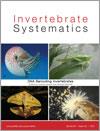Articles (1)
INVASIVE INSECTS (1)
FORENSICS (1)
MUSEUM SPECIMENS (1)

No abstract available
